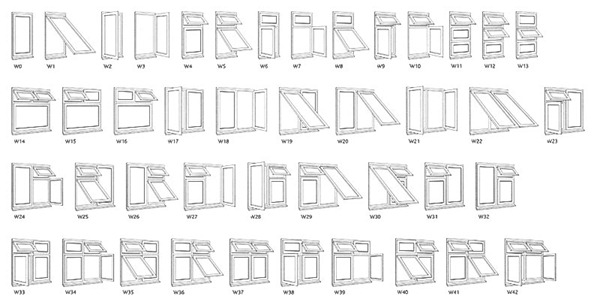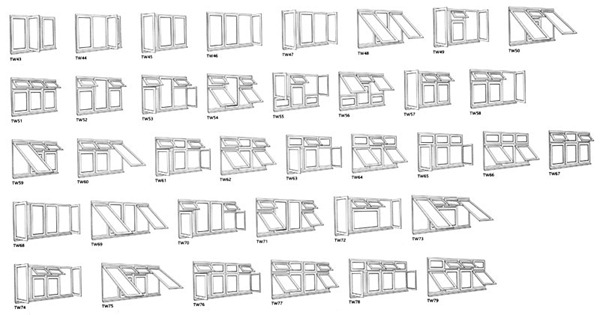Like snapping together a skyscraper: Web components will catalyze a completely new ecosystem for creating UI
In just a few years, the ecosystem in which we create UI will change so dramatically that it will be hard to remember how we did things way back in 2012.
For a sense of perspective, consider a similar change that transpired over a much longer period of time in a different industry: home construction. If you were building a house hundreds of years ago, you might have directly built or overseen most of the elements that went into your house: the framing, the hearth, the chimney, the roof, the windows, doors, you name it. You built nearly everything yourself — there were hardly any components. Depending on where you lived, the only pre-built components you might have used would have been small and simple: glass from a glazier, bricks from a brickmaker, hardware from a blacksmith, and pipes or tiles from a ceramist. Even a glass window would have its surrounding parts — the case or sash, the wooden frame, the sill — measured, cut, and assembled on site and for a specific window. If you hired a craftsman like a carpenter or mason, everything they built for you would have been created on site specifically for your house.
Now build a house in a modern economy. The majority of your home’s elements are components assembled elsewhere by specialists and shipped to your construction site ready for final installation. When you design a house, you now spend a lot of your time looking through catalogs of these components. Most of those components come in standardized dimensions or configurations. Many are quite complex. You can buy an intricate multi-part casement window in a variety of window configurations as a single, complete unit that includes wood, metal, multiple layers of glass, glass treatments, hinges, locks, screens, and other hardware. You can find a similarly dizzying selection of pre-built roof joists, plumbing fixtures, or light sconces, or other components. If you want a component that someone doesn’t already offer for sale, you are either visionary or insane.


A tiny handful of configurations for window components (source: Window Express)
The componentization of the building industry means you can get a lot more house for a lot less money, and the resulting home can be better suited to your needs. Most of the factory-made components will be of better quality than what any one individual could make themselves on site. (It’s the site-built skylights that leak, not the factory-made ones.) And not only is the resulting building different; the component ecosystem brings about myriad new roles and industries.
Now consider software, where we’ve labored for years hand-crafting every element of the user experience like a medieval builder. The browser or OS gives us a tiny number of simple UI primitives; we must write nearly everything else in the UI by hand. For simple designs that are essentially fancy documents, one can use a visual editor of the Adobe DreamWeaver ilk, but you still have to roll up your sleeves. And any UI that affords any significant degree of interactively is created substantially in code on either the back end or front end. To the extent that UI code is “shared”, most often it’s actually copied and then hacked to fit, rather than implemented with a truly shareable component. If you did static analysis of the UI code for the 100 most popular web apps, I’ll bet you’d find that only a tiny percentage of that UI code is actually shared with another organization.
If only there were some standard for composing and extending web UI components, we’d be able to unleash a UI ecosystem that would transform the UI world as thoroughly as the physical building component ecosystem has changed home construction.
The UI field may actually undergo a bigger transformation, because the software world isn’t subject to the same constraints as the physical world. It is possible to create responsive UI components that change based on the device context, meta-controls that generate UI from more basic controls, adaptable components that change based on the user’s abilities and experience, and components that directly exploit third-party services.
With such tools in hand, it should be possible to create huge, complex interfaces in a fraction of the time it currently takes, and for far less money. You’ll be able to assemble the UI of a significant application very quickly, and get something interesting that in many ways actually works. It will be like snapping together building parts to create a skyscraper.
This transformation is still in the future, but it’s coming. One important step here is Google now taking the lead on a spec for web components that will standardize how components are defined and interact. A good summary can be found in Web Components Explained. (Years ago, Microsoft tried to promulgate a standard for HTML Components, but it never caught on.) While closure on the web component spec is still off in the future — and broad availability is, of course, even further away — this new world is coming.
This can’t happen soon enough. It will finally free us from having to waste such an ungodly amount of time attending to the design, coding, and testing of common user interface patterns, and let us move our attention up the value ladder to focus more on our own products’ domains.
This development will ultimately commoditize some large portion of the industry’s UI output. As with the building industry, commoditization of UI elements will catalyze the creation of new roles in the UX industry: specialists who create components, component integrators, component testing labs, standards groups, and many more people in more organiziations creating better UI because they can start with solid, usable components addressing many of their needs.
I’m excited by what this will mean for the QuickUI control framework. Google’s web component spec will eventually let the browser natively address the lowermost functions which QuickUI must currently perform in JavaScript. This will enable much better performance, better isolation and modularity, and faster adoption. It’s too early to say how QuickUI evolve in this regard, but I want to direct its evolution such that it will transition smoothly to the standard web component foundation when that becomes widely available. Among other things, I’d looking at how to evolve the open QuickUI Catalog of common UI controls so that they can someday be delivered as web components on the standard foundation. The goal is that someone using QuickUI controls today will find their investment preserved and profitable when the component future arrives.
If you’re interested in tracking Google’s work on the topic, they are posting announcements on Google+ on the Web Components page.